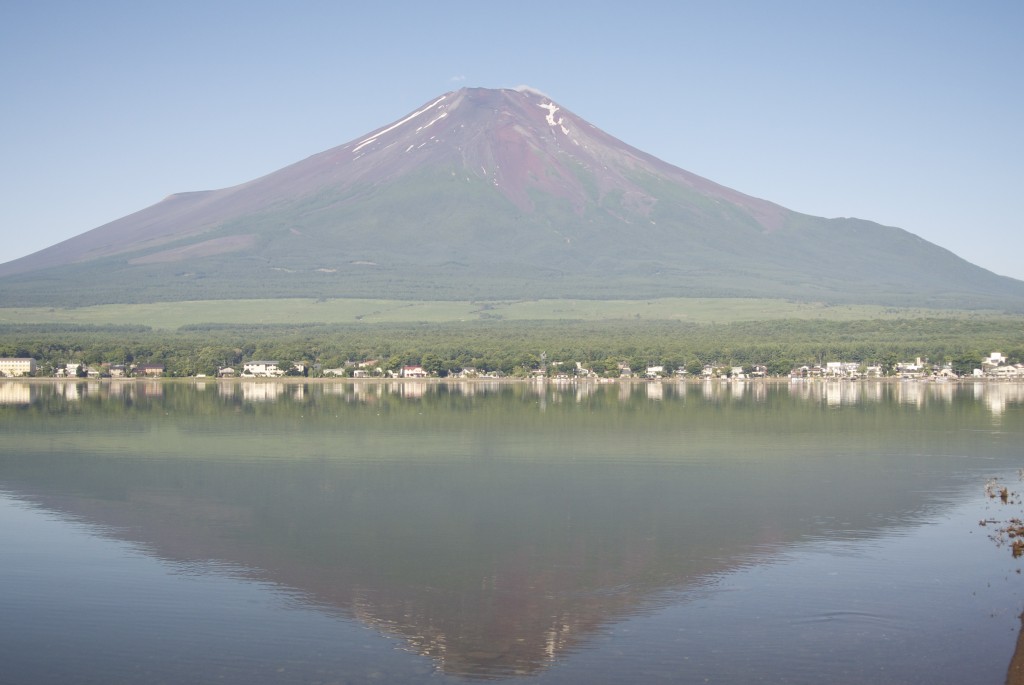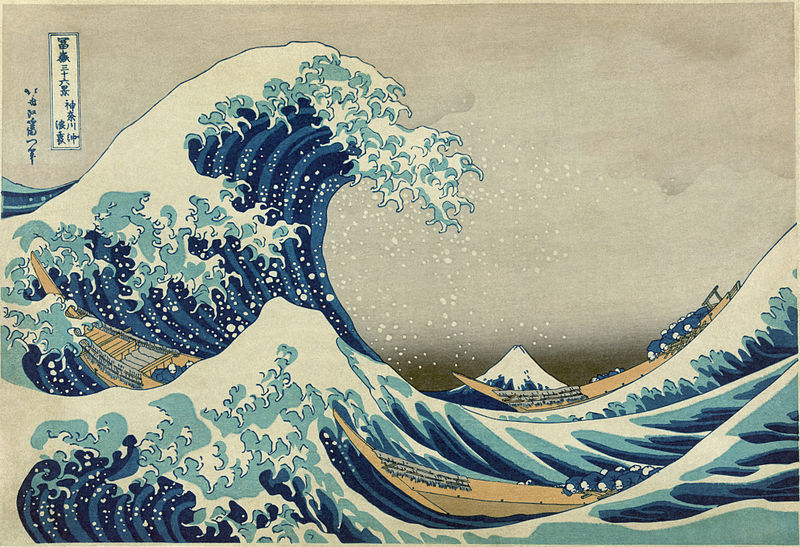
Mt Fuji as seen from Yamanakako, one of the viewspots registered as part of the World Heritage status
Following a recent research trip to Mt Fuji to check on its World Heritage status, Green Shinto will be featuring a series of articles about Japan’s largest and most sacred mountain over the following days.
The designation of Fuji as a World Heritage site is for Cultural rather than Natural reasons (there were too many environmental problems for its initial application as a Natural Heritage site to go through). The Cultural Heritage of Fuji rests on two pillars: one is its religious aspect, and the other is its artistic representation by the likes of Hokusai, Hiroshige and various poets throughout the centuries.
From the bay at Tago
I see, when gazing out,
Pure white –
On the heights of Fuji’s peak
The snow has fallen.
– [by Yamabe-no-Akahito in the Manyoshu (8th century compilation of poetry)]
Yet despite its portrayal in famous ukiyo-e, such as Hokusai’s Great Wave, it’s the religious tradition of Mt Fuji which is responsible for most of the 25 different sites registered as part of Fuji’s World Heritage designation. There are three different strands: 1) the traditional animist worship of mountains; 2) the development of shugendo (mountain asceticism) focussed on Mt Fuji; 3) the Fuji-ko sect, which dates back to the sixteenth century.
As a consequence, Mt Fuji’s recent achievement of World Heritage status has considerably added to the number of Shinto shrines which are officially registered with Unesco for their ‘outstanding universal value’. No fewer than eight different Sengen shrines are included in the registration, together with other religious sites related to Fuji worship. In the articles that follow, I’ll be looking at some of these intriguing places and the remarkable cult of this volcanic mountain.


Leave a Reply